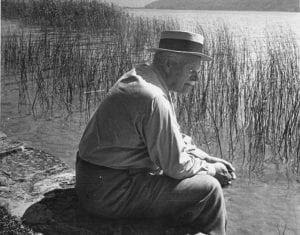To Rene A. Kipfer
Dear Herr Kipfer, 21 October 1960
It is very kind of you to have made me a present of your interesting picture.
Contemplation of an abstract painting always starts me off on the following train of thought: it is not an ob- ject of experience in the outer world, nor is it meant to be.
If nevertheless there are hints of something recognizable, this is an unintentional lapse or an unavoidable con- cession to the understanding of the beholder, or to a desire to communicate.
Experience of the inner world has for its object the phenomena of the psychic background, which in itself is so indefinite or so multifaceted that it can be expressed in an infinite variety of forms.
We will disregard trashy and commercial daubs and consider only those paintings which display a serious pur- pose.
Such paintings are usually under the spell of a classic archetype, such as can be found not only in dreams but in the myths and folklore of all times and places.
Your painting comes under the sign of the dragon motif.
Blue signifies air and water, and from it one could easily construct the image of a Chinese dragon.
But any such concretizing intention is thwarted by your technique: the dragon is all hollowed out and has a ribbonlike appearance.
This loss of substance shows that the dragon is not material but "spiritual."
In Chinese, tao is described as the "valley spirit" and is depicted as a dragon, i.e., as a winding watercourse.
When Henry Moore sculpts human figures he hollows them out as much as possible in order to show that they are not concrete human beings but substanceless, sacred divinities, for instance King and Queen.
Another archetype is expressed by Mother and Child.
Your dragon comes into the category of the great animals in the background who seem to regulate the world. Hence the mainly theriomorphic symbols for the signs of the zodiac as dominants of the psychic process.
Naturally the phenomena observed in the background are not always archetypes; they can also be personal complexes which have acquired excessive importance.
Father and mother are not only personal entities but also have a suprapersonal meaning and are frequently used as symbols for the deity.
In this way the religious view of the world, thrown out at the front door, creeps in again by the back, albeit in strangely altered form-so altered that nobody has yet noticed it.
Thus does modern art celebrate the great carnival of God. With best greetings,
Yours sincerely,
C.G. Jung
Carl Jung, Letters Vol. II, Pages 604-605


No comments:
Post a Comment